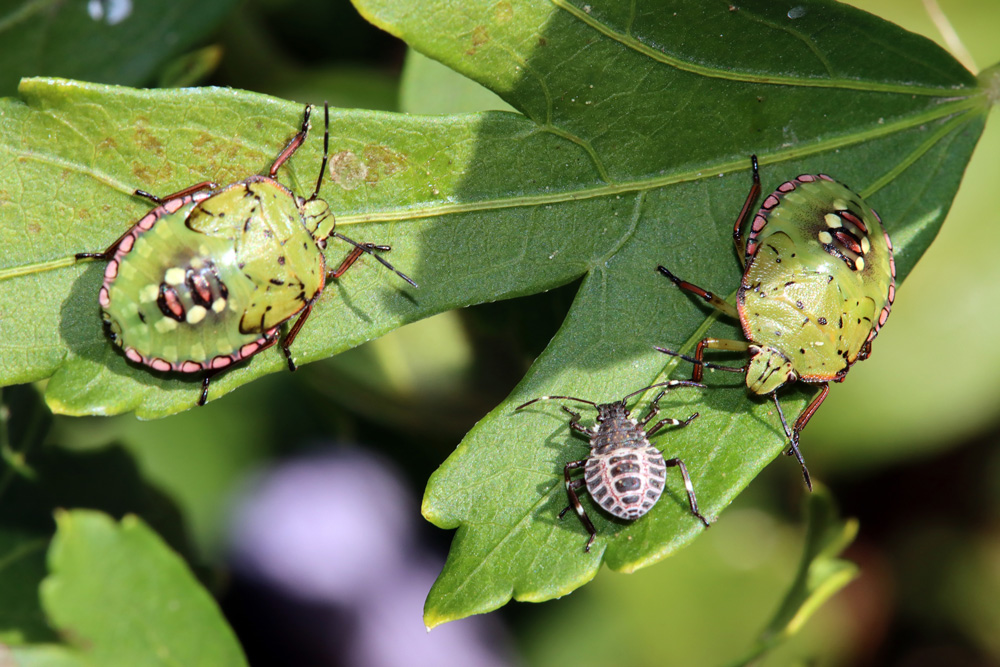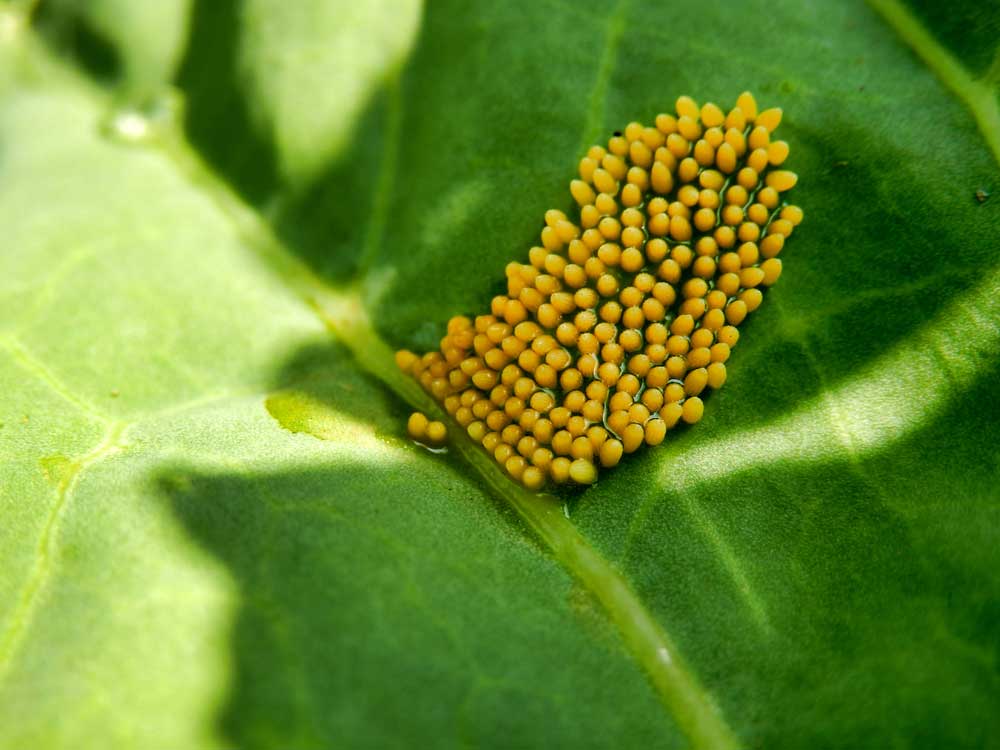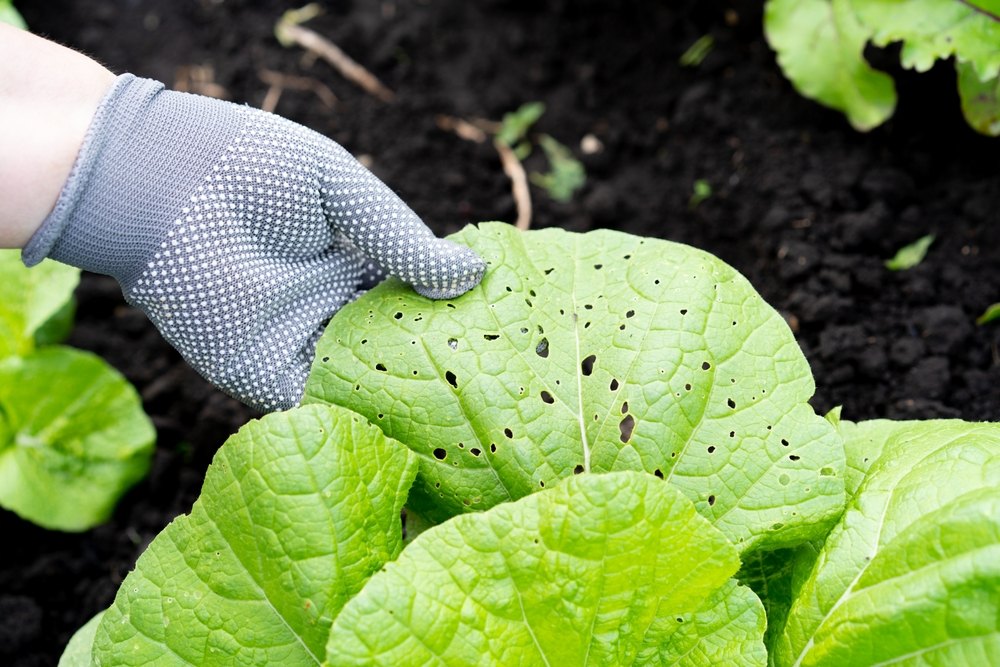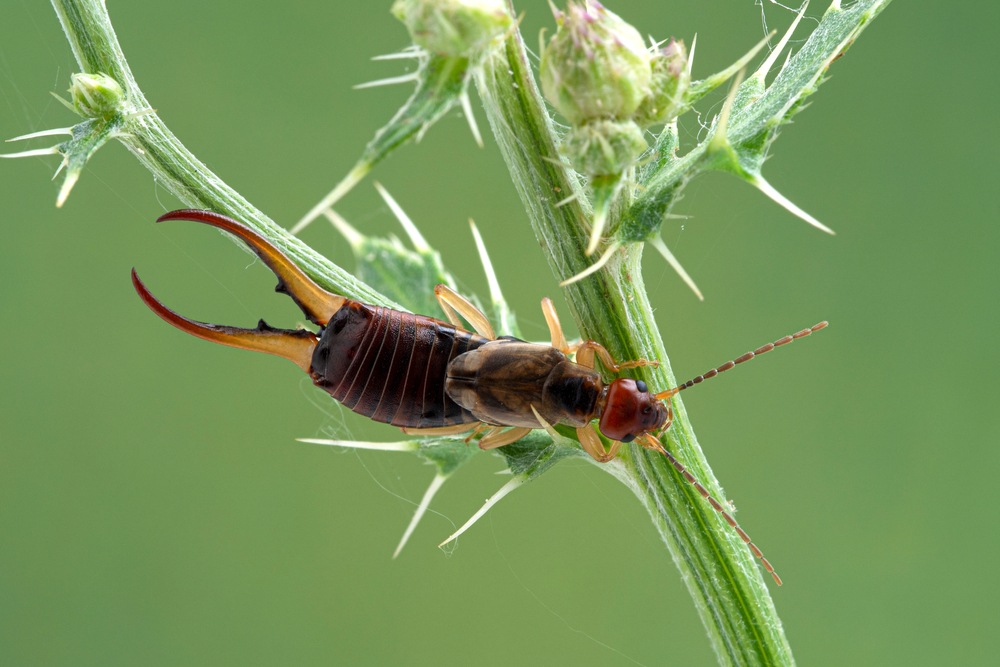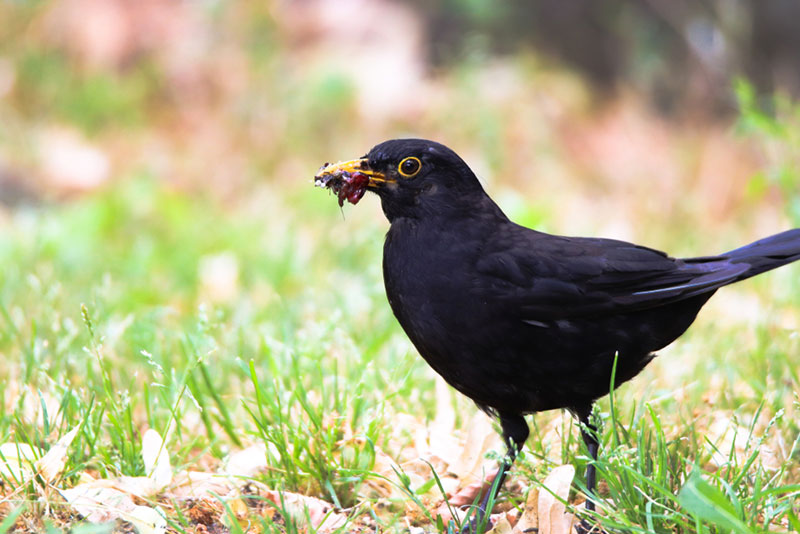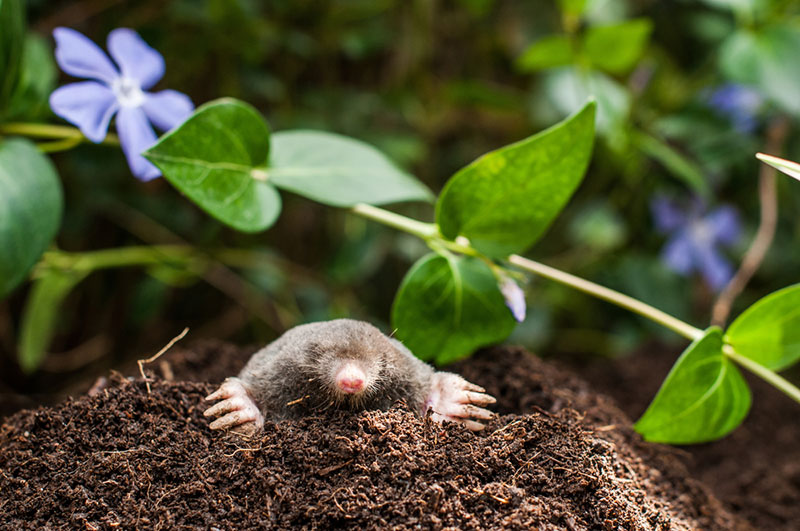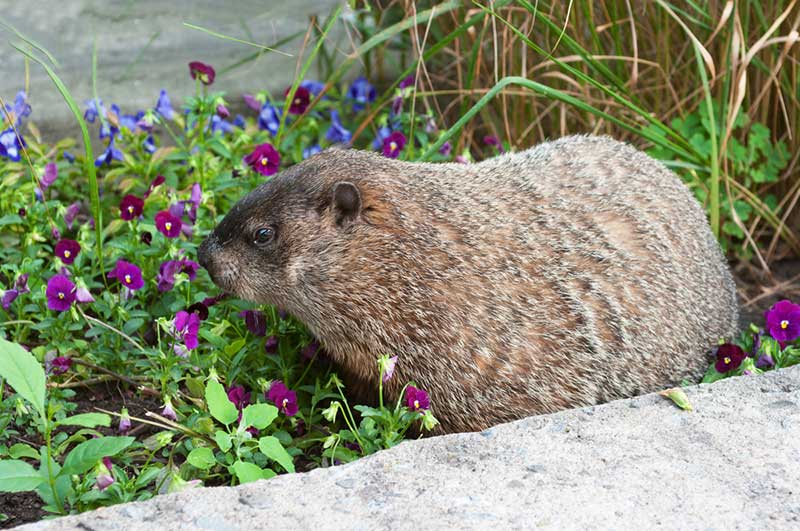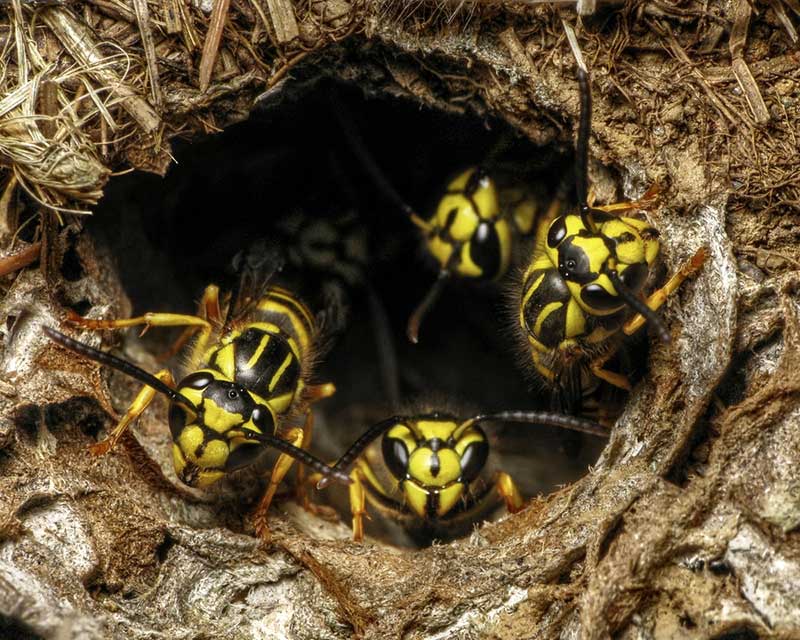Thrips are tiny insects that attack flowers and vegetables, sucking their juices and making them susceptible to other diseases. Not all thrips damage plant material, some are beneficial and feed on other insect pests, including plant damaging thrips. The problem is they can be difficult to tell apart. As a rule, if you observe plant damage, and you see thrips in your garden, you can assume they are the culprits.
What do thrips look like?
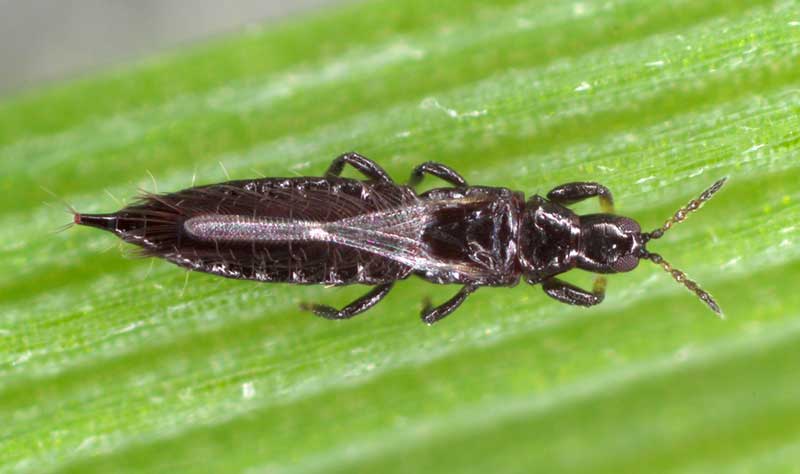
Thrips are so small it can be difficult to see them without a magnifying glass. With the naked eye, thrips look like tiny dark threads on leaves or other plant parts. According to The Old Farmer’s Almanac, adult thrips range in length between 1/50 and 1/25 of an inch. Most have tiny, fringed wings that may or may not be functional. Most thrips leap away when you get close to them, but some can fly.
Colors range from yellow and light brown to dark brown or black. Nymphs are generally yellow or green and may have red eyes.
To get a good look at thrips, hold a piece of white paper under the foliage and shake it. The tiny thrips will be visible against the light background.
Do thrips eat plants?
Thrips chew tiny holes in foliage and fruits and suck the plant juices. This damages the plant by robbing it of some of its nutrients, but the real damage often occurs when disease-causing viruses or bacteria enter the broken skin of the plant.
Thrip damage is often responsible for tomato spotted wilt virus that can wreak havoc with your tomatoes.
Otherwise, thrip damage may leave fruits and veggies scarred, may prevent flowers from blooming or may leave ugly spotting on your plants. Distorted buds and foliage is also a sign of thrip damage.
Should you use insecticides to kill thrips?
There are a number of insecticides available for killing thrips, but they also kill off other beneficial insects, too. Many choose not to use insecticides in the garden as introducing chemicals to the garden can pose a risk to wildlife, bees, small children and pets and can even contaminate the fruits and veggies. When other methods fail, insecticides may be your only choice.
If the infestation is severe and out of control, and you feel you need to use insecticides, opt for one with the active ingredient pyrethrin. This is a short-lived botanical insecticide that eliminates the risk of unwanted contamination with unnecessary chemicals.
But, beware that using insecticides carries with it the potential to kill off good bugs in your garden and may leave your plants more susceptible to insects pests that a more resistant to insecticides.
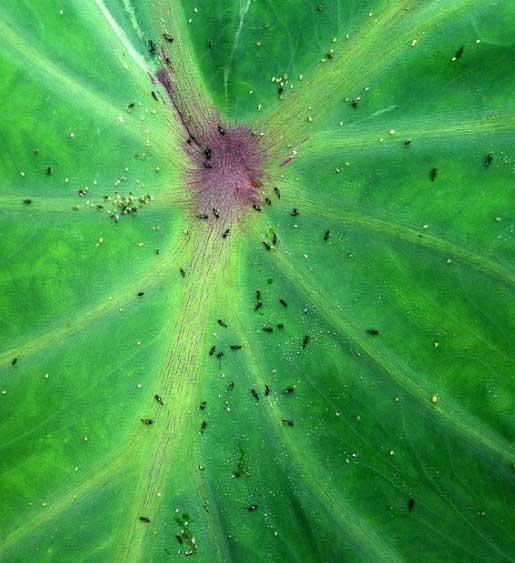
Are there natural methods to get rid of thrips?
Yes. There are several natural remedies that are effective against thrips.
- Sticky Traps: Blue or yellow sticky traps are effective for trapping thrips. Place the traps near flowers and veggies where thrips are a problem. These traps attract the thrips which get stuck to the trap and die.
- Physical Removal: Hose down the infected plants with the sprayer attachment to your garden hose to physically remove from the plants. This method is effective with minor infestations and can be combined with the use of insecticidal soaps.
- Insecticidal Soaps: Insecticidal soaps work by clogging the breathing pores of the thrips. There are several forms available at the hardware store, but you can make your own. Mix a tablespoon of dish detergent and a tablespoon of vegetable oil in a spray bottle filled with water. Shake gently to distribute the soap and water. Spay the mixture directly on the thrips to kill them. Insecticidal soaps can be an effective method for getting rid of thrips, but they must be applied directly to the thrip to work their magic.
- Introduce Beneficial Insects: Introducing beneficial insects, such as lady bugs and lacewings, will greatly reduce the number of thrips in your garden. Beneficial insects will also provide the added benefit of keeping other insect pests under control, too.
- Biological Insecticides: Purchase a biological insecticide containing ‘Beauveria bassiana’ for a safe and effective method of killing thrips. Follow the instructions on the container.
How do you prevent thrips from attacking your plants?
The most effective way to prevent damage from thrips is to make your garden uninviting in the first place. Keeping the area around your garden clean and free of debris goes a long way towards preventing thrips in your garden.
- Remove weeds and grasses from around the perimeter of the garden. Keep the grass mowed low.
- Plant marigolds, nasturtiums and other herbs throughout your garden, or around the perimeter, to help deter thrips and other insect pests. These scented plants are thought to mask the scent of your veggies deterring insect pests from finding them.
- Dispose of all plant debris, especially onion tops, when you harvest your veggies. Green tops or foliage left laying in the garden provide a feast for thrips.
- Cleanup the garden at the end of the season. Plant debris or old plants allowed to stand in the garden over the winter provide a place for thrips to overwinter.
Keeping your garden clean and free of old plant debris is the first step to preventing insect damage in the garden, but checking your plants frequently for signs of damage is important too. Make a habit of checking plant foliage, especially the undersides of leaves and the area where branches meet the main stalk. Take action at the first sign of thrip damage to avoid a full-blown infestation.





